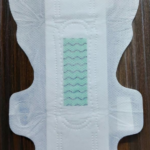Why Are Blood vessels Blue?
Have you ever asked yourself why capillaries show up blue through the skin? Despite the misunderstanding that blood vessels carry blue blood, they really deliver oxygen-rich blood, much like arteries. Heaven shade of blood vessels is a result of a number of variables, including the homes of blood and also the method light interacts with our skin. In this article, we will certainly explore the science behind why blood vessels show up blue and also unmask some typical misconceptions bordering this topic.
The Shade of Blood: Red vs. Blue
As opposed to common belief, blood is not blue when it moves with our blood vessels. Actually, blood is always red, despite whether it is oxygenated or deoxygenated. The color we associate with capillaries is just an illusion caused by the way our eyes view light.
When light enters our skin, it permeates the layers as well as is absorbed by the surrounding cells. The light that is mirrored back to our eyes includes different wavelengths, which our mind takes shades. While arterial blood, which carries oxygen, appears intense red due to its high oxygen web content, venous blood shows up darker and also might offer the impression of being blue.
The reason behind this shade distinction hinges on the method light engages with our skin and also the homes of blood. Oxygen-rich blood absorbs light in different ways than oxygen-depleted blood, leading to a variant of shades regarded by our eyes.
- Arteries: Arteries carry oxygenated keramin za glivice blood away from the heart as well as towards the body’s organs and also cells. The bright red color of arterial blood is due to the visibility of oxyhemoglobin, a particle which contains oxygen and provides blood its lively tone.
- Capillaries: Veins, on the other hand, transport deoxygenated blood from the body’s body organs and also tissues back to the heart. The darker appearance of venous blood is mainly attributed to the existence of deoxyhemoglobin, a particle doing not have oxygen. This deoxyhemoglobin absorbs specific wavelengths of light, making the blood appear much less intense and also closer to blue.
The Role of Skin and also Fat
The color of blood vessels is additionally affected by the skin and also fat that surround them. Both the skin as well as subcutaneous fat layer have a blue touch that can contribute to the understanding of veins as blue.
Our skin contains a number of layers that differ in density as well as pigmentation. The topmost layer, known as the skin, is fairly thin and also clear. This permits some of the underlying residential properties, such as capillary, to be visible via the skin. The dermis, which lies underneath the skin, includes a network of blood vessels, consisting of veins, that more contribute to the observed blue shade. In addition, the presence of subcutaneous fat can scatter light, leading to a bluish appearance of the blood vessels.
Additionally, elements such as the amount of melanin in our skin, as well as the thickness of the skin and fat layer, can affect the viewed color of veins. People with reasonable or lighter complexion may have capillaries that appear more blue because of the contrast between the veins and also the surrounding tissue. On the other hand, individuals with darker skin tones might have veins that show up even more environment-friendly or brown as a result of the increased melanin web content in their skin.
Exposing Common Myths
There are a couple of typical misconceptions bordering the color of veins that are worth debunking:
- Misconception: Veins are blue due to the fact that they carry deoxygenated blood.
- Fact: Blood vessels appear blue because of the method light interacts with our skin and also the presence of deoxyhemoglobin, not because they bring deoxygenated blood.
- Misconception: When you hemorrhage, the blood is blue before it comes into contact with air.
- Reality: Blood is constantly red, whether inside or outside the body. The perception of blood as blue is merely an outcome of the means light interacts with our skin.
- Misconception: Blue capillaries are an indication of poor circulation.
- Fact: The shade of blood vessels is not a precise sign uromexil forte apteka of circulation. Capillary shade can be influenced by factors such as skin tone, fat material, as well as the density of the skin and subcutaneous layer.
Conclusion
Although blood vessels might appear blue through our skin, this is just an optical illusion. The shade of veins is not a sign of the oxygen material or circulation of blood. Comprehending the scientific research behind why blood vessels show up blue can help dispel misconceptions and also offer a clearer understanding of our body’s circulatory system.









